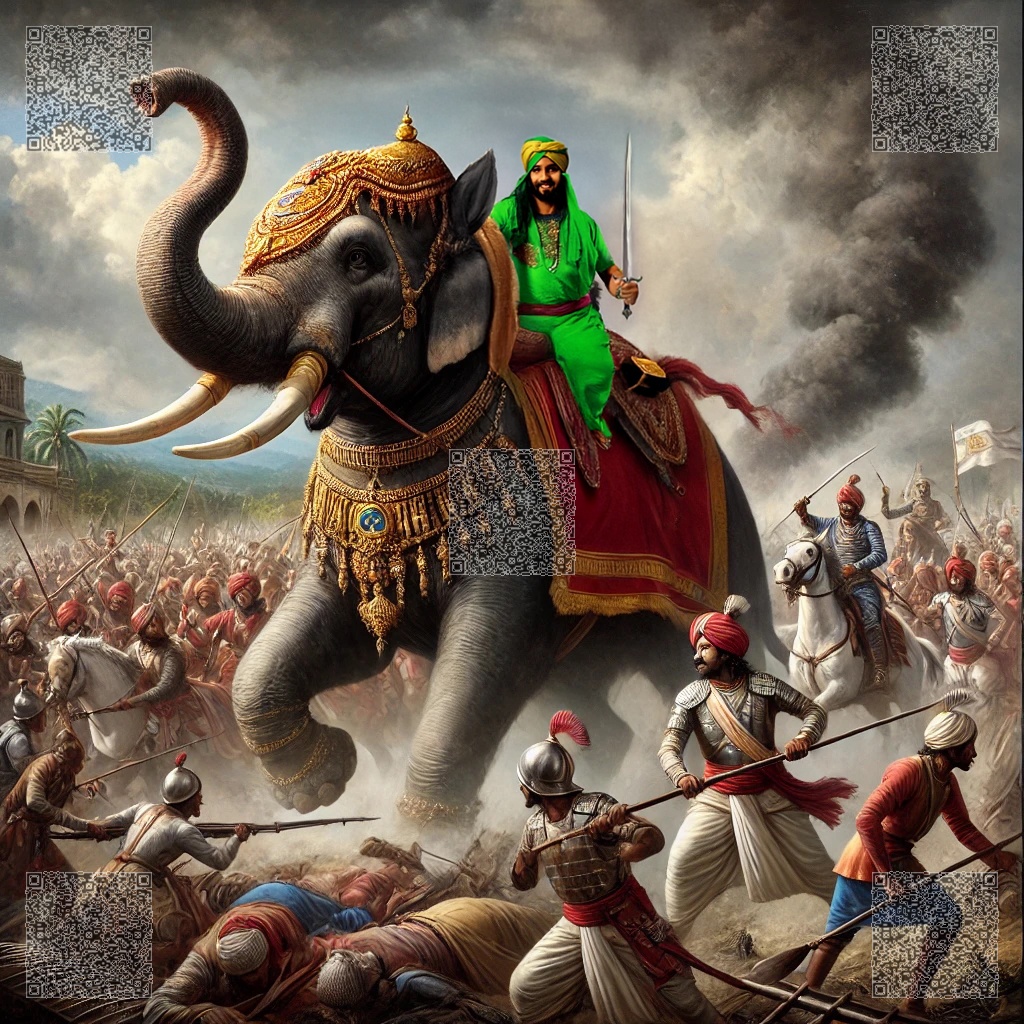Hyder Ali’s Failed Invasion of Travancore: A Technical Analysis of Strategy and Tactics
Hyder Ali of Mysore, a formidable military strategist of the 18th century, attempted to invade Travancore in 1767 but faced an unprecedented defeat. This failure can be attributed to the superior defensive strategies employed by the Travancore army under Dharma Raja and the war knowledge of Alummoottil Channar, a key commander who orchestrated an intricate defense. This article delves into the technical aspects of this battle, analyzing the use of fortifications, guerrilla warfare, and amphibious tactics that contributed to Hyder Ali’s failure.

1. Strategic Miscalculations by Hyder Ali
Hyder Ali had successfully expanded his kingdom through aggressive military campaigns, utilizing a combination of cavalry, artillery, and infantry supported by French-trained engineers. However, his campaign against Travancore was marred by the following strategic miscalculations:
- Underestimating the Terrain: Travancore’s dense forests, riverine networks, and fortified highlands made large-scale cavalry and artillery movement ineffective.
- Failure to Secure Supply Lines: Unlike the open plains of Mysore, Travancore’s logistical demands were more complicated due to its marshy regions and backwaters, which disrupted Hyder’s supply chain.
- Neglecting Amphibious Warfare: Mysore’s forces lacked the expertise in dealing with waterborne defenses and counter-amphibious operations used by Travancore’s military.

2. The Role of Alummoottil Channar in Defending Travancore
2.1. Engineering of Nedumkotta Fortifications
Alummoottil Channar played a crucial role in designing and maintaining Nedumkotta, an advanced defensive structure made of mud, laterite, and granite. The fortification system featured:
- Deep Trenches and Moats: These were filled with water, preventing easy breaches and counteracting cavalry charges.
- Strategic Watchtowers and Bastions: Provided vantage points for musketeers and archers to engage advancing forces.
- Dual-Layered Defense Lines: Allowed defenders to fall back and reorganize without compromising the entire structure.
2.2. Guerrilla Warfare Tactics
Travancore’s forces, under Channar’s command, effectively utilized guerrilla tactics that neutralized Hyder Ali’s conventional warfare approach:
- Ambush Tactics: Light infantry units would lure Mysorean forces into dense forests and unleash a barrage of arrows and musket fire from concealed positions.
- Hit-and-Run Raids: Fast-moving units harassed Mysorean supply lines, forcing Hyder Ali’s forces into prolonged skirmishes that drained resources.
- Deception Tactics: False retreat maneuvers were employed to lead Mysore’s forces into pre-arranged kill zones.
3. Amphibious Defense Strategy
Given Travancore’s complex riverine networks and coastal geography, Alummoottil Channar devised a unique amphibious defense strategy:

- Use of War Canoes and Floating Batteries: These were deployed to disrupt Mysorean movements across rivers and backwaters.
- River-Based Fortifications: Constructed along major waterways, equipped with cannon emplacements to restrict Mysorean naval maneuvers.
- Swamp-Based Entrapment: Mysore’s forces were led into artificially flooded areas where their mobility was severely restricted, making them easy targets.
4. Psychological Warfare and Hyder Ali’s Retreat
The psychological impact of sustained guerrilla and amphibious assaults demoralized Mysore’s troops. Furthermore, the extended campaign drained Mysore’s resources, and Hyder Ali, facing renewed threats in the north from the Marathas, was forced to retreat.
Conclusion
Hyder Ali’s failure to conquer Travancore was not merely a result of natural geographical barriers but rather a masterclass in defensive warfare, engineered by the strategic brilliance of Alummoottil Channar. The combined use of fortifications, guerrilla warfare, and amphibious tactics rendered Hyder Ali’s conventional military strategies ineffective. This campaign stands as a testament to the ingenuity of indigenous military tactics against superior invading forces.



